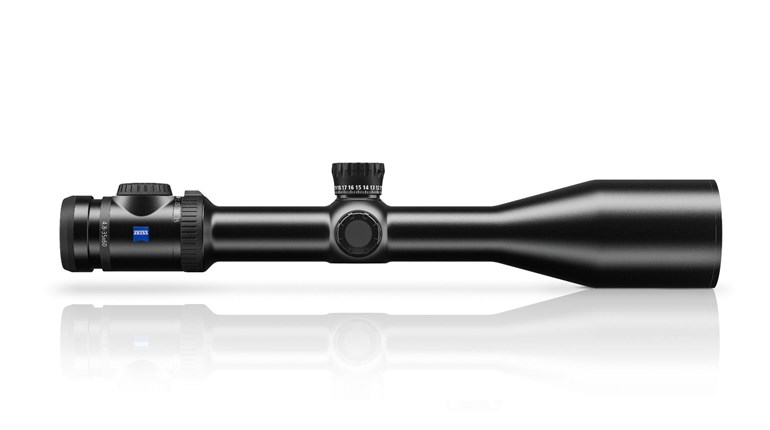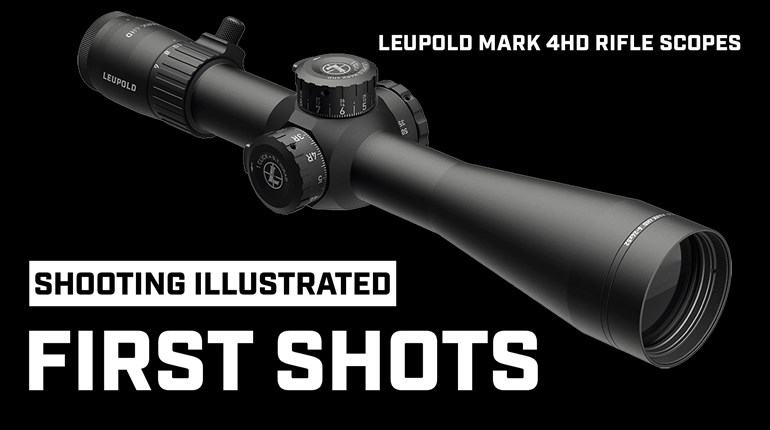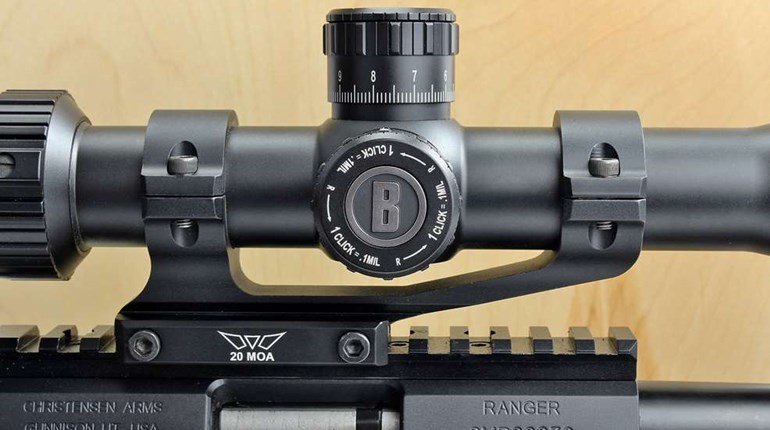Every hunter has his or her own idea of what constitutes “long range.” If you live in New England, you may consider 200 yards a long shot. Wyoming residents might think 450 yards is pushing the envelope. For me, any shot that falls beyond my rifle’s maximum point blank range—i.e., a shot that requires me to adjust my aim to account for bullet drop—is long. I’m not trying to start an ethical debate about purposefully taking long shots when the opportunity to get closer exists; I’m talking about the real-world problem of effectively compensating for bullet drop when closing the distance isn’t possible. Leupold offers some highly effective products that make life easier when these shots present themselves.
To compensate for bullet drop, you have two options: turret or reticle. Dialing for range involves changing the setting of your scope’s elevation turret to account for the bullet’s trajectory. It’s precise and it works. Though several turret styles are available on Leupold’s tactical and target scopes, the Custom Dial System (CDS) is the one designed with hunters in mind. Available as a factory option on many Leupold models and as a Custom Shop addition to a number of existing, already purchased scopes, the CDS replaces the elevation turret cap with a low-profile, click-adjustable dial.
A standard dial based on minutes of angle (MOA) allows the user to adjust for any range with any given load in 0.25-MOA increments. Using a ballistic table or a ballistic app on your smartphone to determine bullet drop, dial the needed elevation and hold dead-on. While this is great on the range, it could get tricky in the field, where game doesn’t often stand around waiting for you to do the math. For this reason, the Leupold Custom Shop will create a dial for your exact hunting load that makes the process painfully simple.
You provide Leupold with specific data on your factory round or handload, such as bullet type and weight, ballistic coefficient, muzzle velocity, temperature and elevation (I use averages for the environmental conditions), and the Custom Shop sends you a dial calibrated from 100 to 600 yards or from 200 to 700 yards. Once it’s zeroed, simply dial the range to the target and hold dead-on vertically. You still have to account for wind if it’s going to be a factor, but the CDS takes care of holdover. I’ve tested the CDS on three scopes and four rifles out to 600 yards, and it works as advertised. One technique I’ve learned is the farther you can fine-tune the dial’s zero (300 yards is my preference), the more precise your hits will be at the longer ends of the envelope.
If the dial isn’t for you, Leupold also offers the rugged simplicity of a custom reticle. Provide the same load and environmental data stated previously, and the Custom Shop will make you a specific reticle with aiming dots that correspond to various distances. If you need to make a shot at 300 yards, put the 300-yard dot on the target, hold for wind, and squeeze the trigger. Though it’s not quite as precise as the CDS dial because it can’t be adjusted for the exact range to the target, the custom reticle is as fast as it gets.
After spending too much time debating the merits of a dial vs. a custom reticle, I opted for both. I sent Leupold my 6X-42mm FX-3 to have both a CDS dial and a custom reticle installed using the ballistics of .270 Win. Barnes Vor-Tx 130-grain TTSX factory ammunition. I keep the CDS dial locked down with electrical tape (I don’t trust anything not to turn on me after a few days in a saddle scabbard or strapped to a pack) and have the reticle available for a fast shot. If I have time to be more precise, off comes the tape and I dial for the range.
Though both the dial and reticle are very effective, neither is of value if you don’t know the precise range to the target. The 8-ounce Leupold RX-1000i TBR rangefinder not only tells you exactly how far away the target is, but it also gives you the true ballistic range, which can differ significantly from the line-of-sight distance in steep terrain. The combination of this rangefinder with one of Leupold’s aiming solutions can make the difference between an unethical guess and a confident shot at a hard-earned trophy.
After three flights, as many baggage transfers, and my rifle getting banged in and out of rental cars and hotel rooms, I wanted to confirm its zero before my high-country muley hunt. While I was visiting gunmaker Shane Thompson at his Idaho shop, he took me to a nearby gravel pit and we set up steel targets at 300, 450 and 565 yards. Using my pack for a rest, I dialed the range, held for an 8 mph wind and shot a group at 300 yards that my year-old daughter could cover with her palm. Best of all, my zero hadn’t shifted. Once we got our wind calls down, I was banging steel well beyond any range at which I would attempt to shoot an unwounded game animal.
The Leupold CDS dial and custom reticle won’t make you a better shot—that takes hours of practice and pounds of burnt powder—but they will give you confidence that your bullet will go where it’s supposed to when you do your part. Add an accurate rangefinder, and you’ll have a system that takes much of the guesswork out of making a long shot—wherever you hunt.
Technical Specifications:
CDS Dial
• Construction: aluminum with laser-inscribed, load-specific range markings
• Compatible Models: VX-2, VX-3, VX-6, VX-R; some FX models; contact Leupold to inquire about others
• Data Required: cartridge, caliber, bullet weight/brand/type/BC, muzzle velocity, elevation, temperature
• MSRP: $59.99 (VX-3 CDS models come with coupon for a free custom dial)
Custom Reticle
• Construction: electroformed with load-specific range holdover points
• Compatible Models: VX-1, VX-2, VX-3; some FX models; contact Leupold to inquire about others
• Data Required: cartridge, caliber, bullet weight/brand/type/BC, muzzle velocity, elevation, temperature
• MSRP: $69.99





































